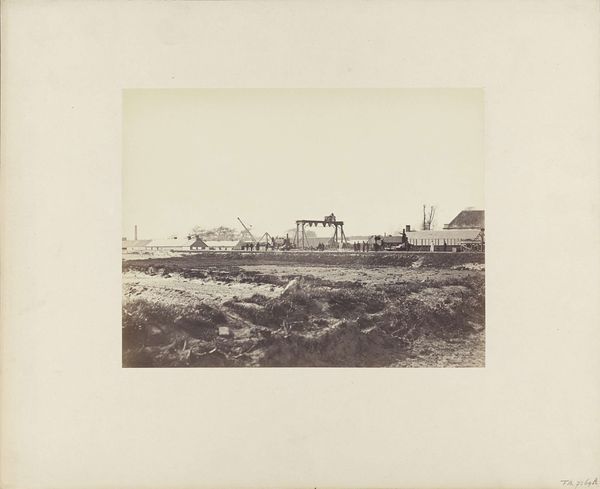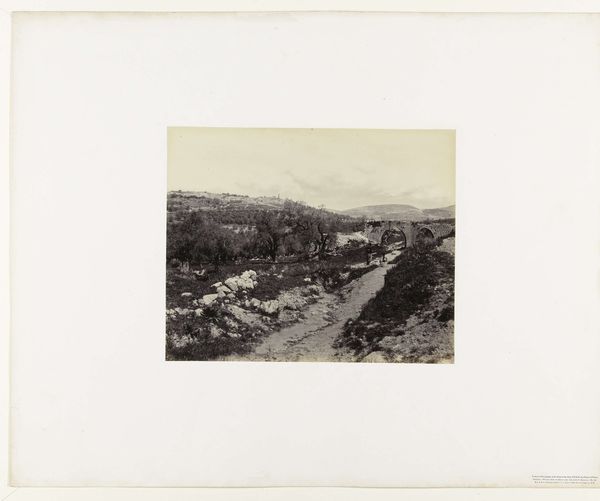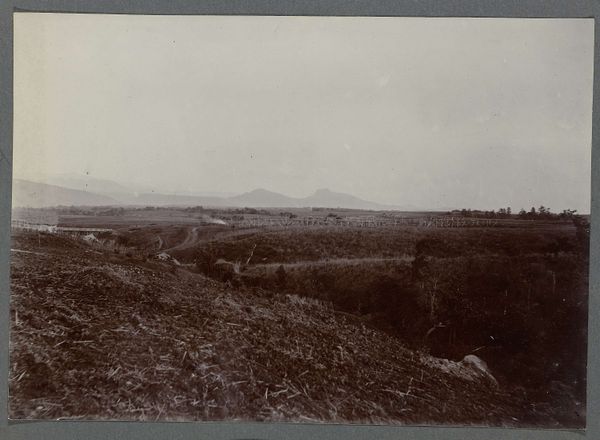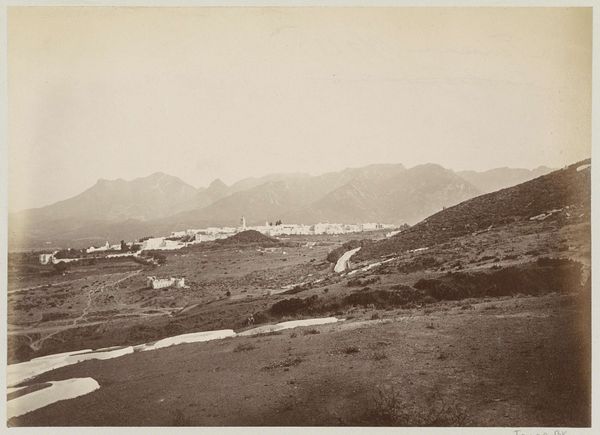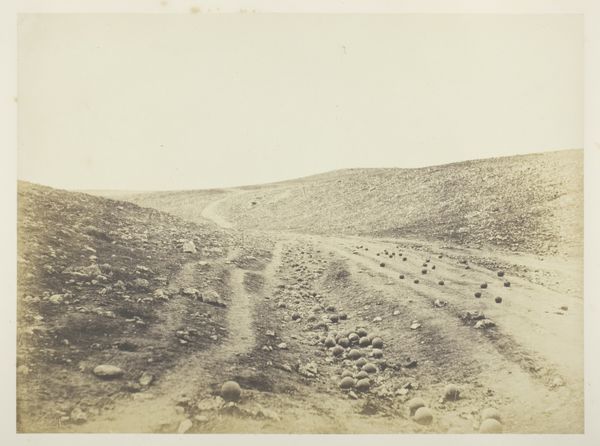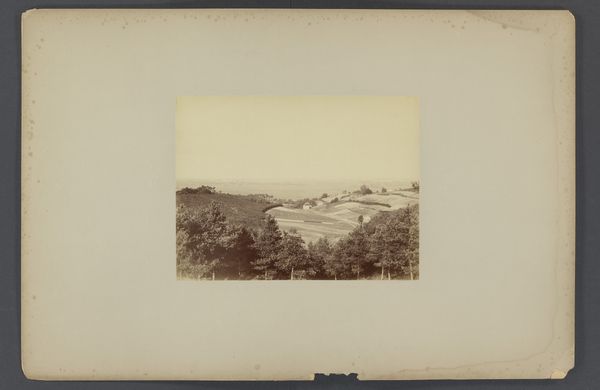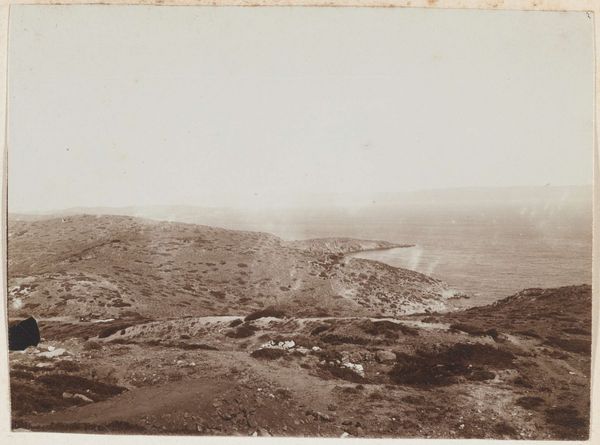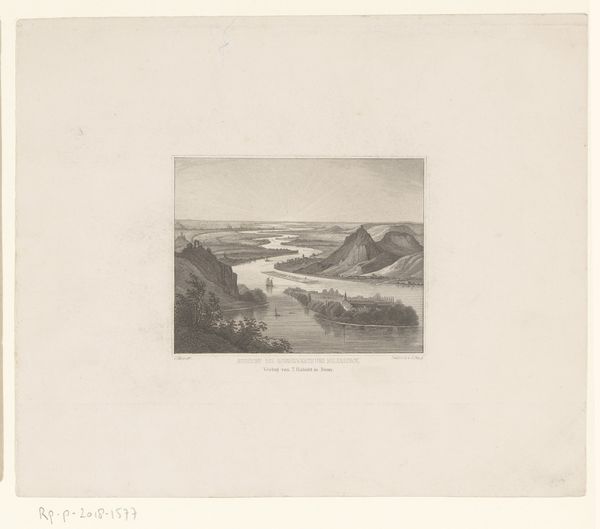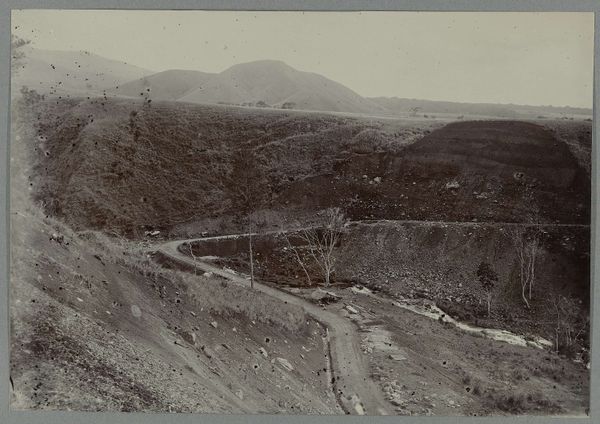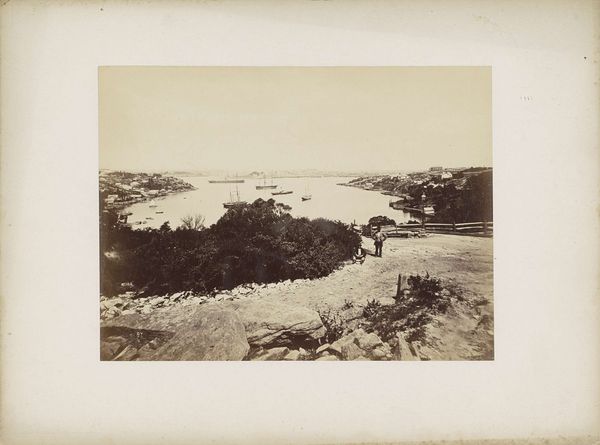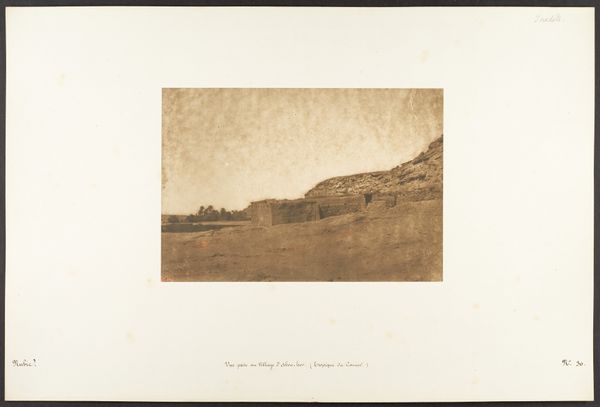
photography, gelatin-silver-print
#
16_19th-century
#
light coloured
#
landscape
#
photography
#
gelatin-silver-print
#
realism
Dimensions: height 237 mm, width 321 mm
Copyright: Rijks Museum: Open Domain
Rudolph Guicherit captured the construction of the Noordzeekanaal in 1866. Observe the parallel lines carved into the earth—they speak of human ambition and the will to reshape nature. Canals, from ancient Mesopotamia to Venice, have always represented a desire to control and navigate the world, turning earth into a vessel. We see this impulse echoed in Egyptian hieroglyphs depicting waterways, symbols of life and order carved into stone, a testament to the belief in humanity's ability to command the environment. This act of channeling water is not merely practical; it's a profound statement of intent, a reshaping of the world according to human design. The image invites us to consider the psychological impact of such grand projects. There is a certain Promethean ambition in this endeavor, a desire to challenge the gods by carving new paths through the earth. The workers become symbolic figures, embodying the collective will to transform the landscape, driven by a potent blend of hope and the subconscious yearning to leave a lasting mark on the world.
Comments
No comments
Be the first to comment and join the conversation on the ultimate creative platform.
